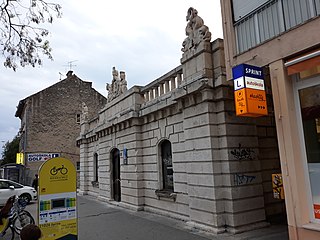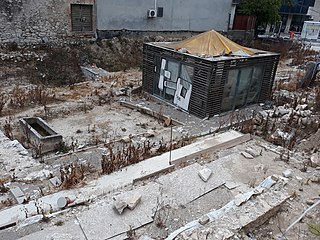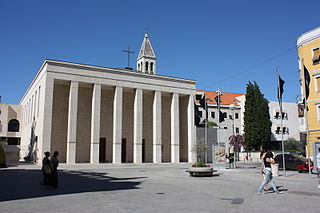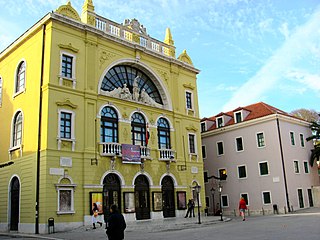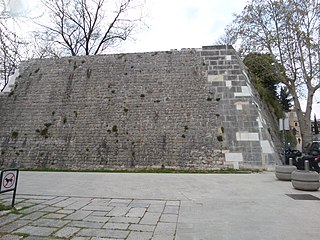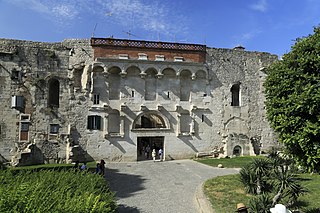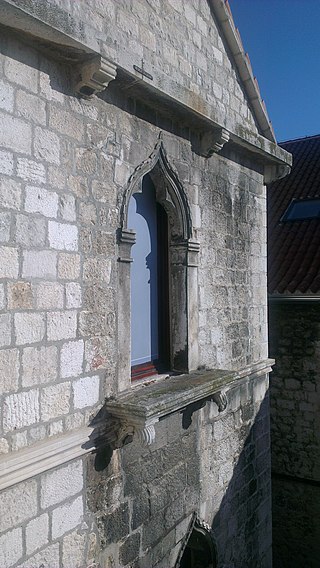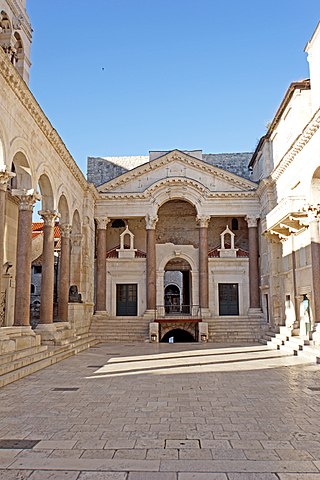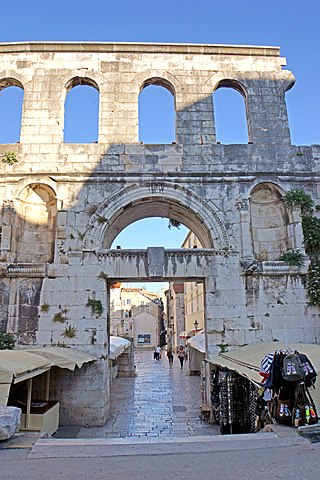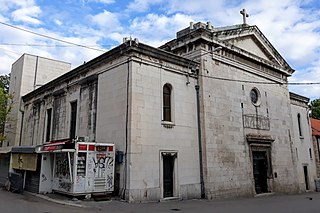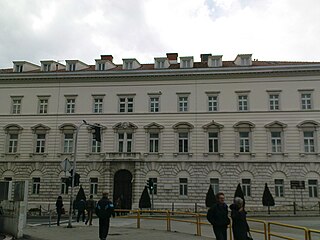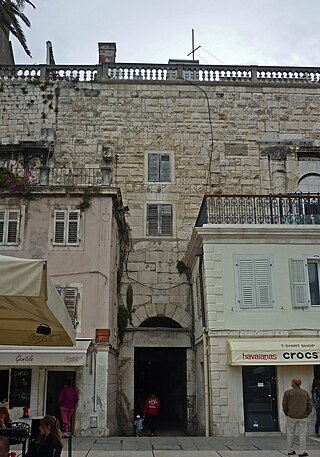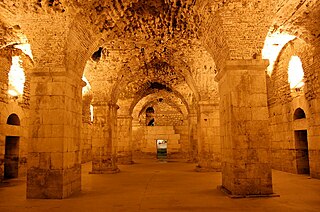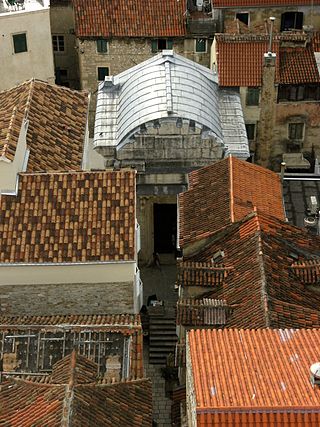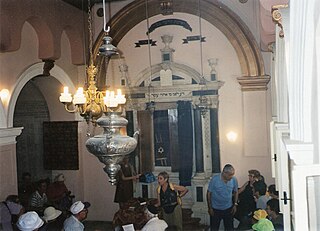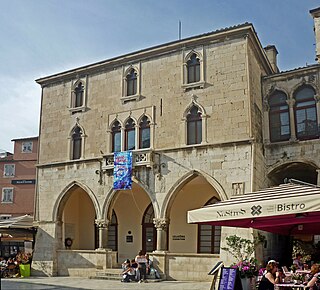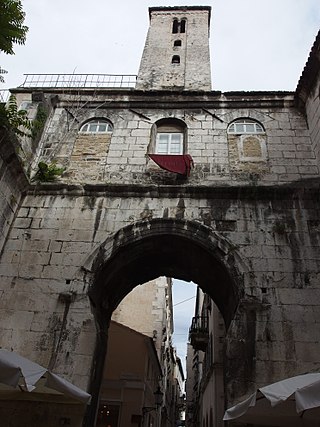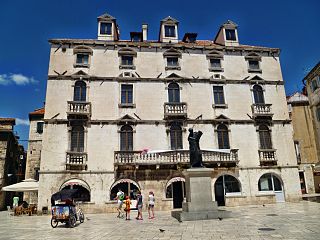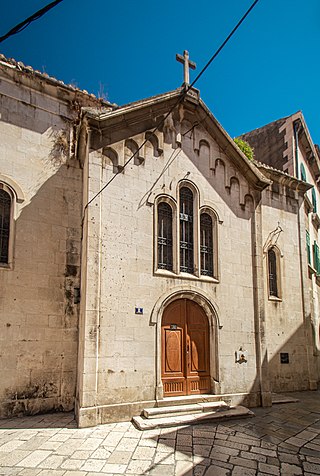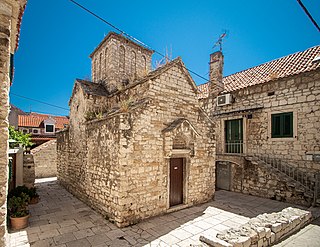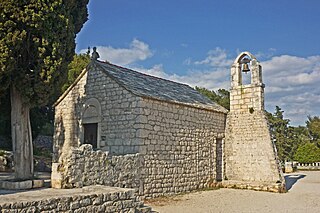Self-guided Sightseeing Tour #1 in Split, Croatia
Legend
Guided Free Walking Tours
Book free guided walking tours in Split.
Guided Sightseeing Tours
Book guided sightseeing tours and activities in Split.
Tour Facts
4.1 km
80 m
Experience Split in Croatia in a whole new way with our free self-guided sightseeing tour. This site not only offers you practical information and insider tips, but also a rich variety of activities and sights you shouldn't miss. Whether you love art and culture, want to explore historical sites or simply want to experience the vibrant atmosphere of a lively city - you'll find everything you need for your personal adventure here.
Activities in SplitIndividual Sights in SplitSight 1: Muzej vode u Splitu
The building of the old water supply system in Split, Croatia, at the address Domovinskog rata 9.
Sight 2: Ad basilicas pictas
The archaeological site of Ad basilicas pictas in Split is a protected cultural asset.
Sight 3: Museum of Illusions
The Museum of Illusions or Museum of Illusions is a museum in Split, Croatia. It was inaugurated in 2020 and is located just west of Strossmayer's Park and north of Split's historic center and the former Roman Diocletian's Palace. The Museum of Illusions is a sister museum to the Museum of Illusions in Zagreb.
Sight 4: church of Our Lady of Good Health
Church and Monastery of Our Lady of Health, a famous Marian shrine in Split. Today's church was built in recent times and consecrated in 1937, and is located on the site of an older church from the 18th century. It is located on the north side of Gaje Bulat Square, east of the CNT building in Split.
Wikipedia: Franjevačka crkva i samostan Gospe od Zdravlja u Splitu (HR)
Sight 5: Hrvatsko narodno kazalište u Splitu
The Croatian National Theatre Split operates in a building erected on May 6, 1893 on Gaje Bulat Square in Split. The Croatian National Theatre in Split is the central theatre in Split and the most important theatre institution in Dalmatia. The theater building is a protected cultural property.
Wikipedia: Hrvatsko narodno kazalište u Splitu (HR), Website
Sight 6: Froggyland
Froggyland is a taxidermy collection and museum located in Split, Croatia. It is next to a 4th-century palace built for Diocletian, an emperor of Ancient Rome. The museum is known for its display of 21 dioramas containing 507 different taxidermy frogs posed to appear as if they are participating in human activities.
Sight 7: Bedem Cornaro
The Cornaro rampart is a fortification building in Split, Croatia. It is located near Strossmayer Park, Zagrebačka, Sinjska and Nodilova streets.
Sight 8: Golden Gate
Get Ticket*The Golden Gate, or "the Northern Gate", is one of the four principal Roman gates into the stari grad of Split. Built as the main gate of Diocletian's Palace, it was elaborately decorated to mark its status. Over the course of the Middle Ages, the gate was sealed off and lost its columns and statuary. It was reopened and repaired in modern times and now serves as a tourist attraction.
Sight 9: Velika Papalićeva palača
The Great Papalić Palace is a Gothic-Renaissance building in Split, not far from the Golden Gate of Diocletian's Palace, at the address Papalićeva 1. It is a protected cultural property.
Sight 10: Diocletian's Palace
Get Ticket*Diocletian's Palace was built at the end of the third century AD as a residence for the Roman emperor Diocletian, and today forms about half of the old town of Split, Croatia. While it is referred to as a "palace" because of its intended use as the retirement residence of Diocletian, the term can be misleading as the structure is massive and more closely resembles a large fortress: about half of it was for Diocletian's personal use, and the rest housed the military garrison.
Sight 11: Cathedral of Saint Domnius
Get Ticket*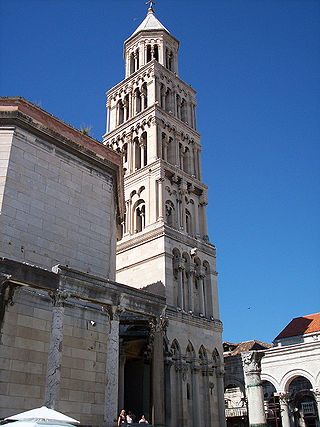
The Cathedral of Saint Domnius, known locally as the Sveti Dujam or colloquially Sveti Duje, is the Catholic cathedral in Split, Croatia. The cathedral is the seat of the Archdiocese of Split-Makarska, currently headed by Archbishop Zdenko Križić. The Cathedral of St. Domnius is a complex of a church, formed from an Imperial Roman mausoleum, with a bell tower; strictly the church is dedicated to the Virgin Mary, and the bell tower to Saint Domnius. Together they form the Cathedral of St. Domnius.
Sight 12: Silver Gate
The Silver Gate, or "the Eastern Gate", is one of the four principal Roman gates into the stari grad of Split that was once Diocletian's Palace. The gate faces east towards the Roman town of Epetia, today Stobreč.
Sight 13: The Dominican Church and Monastery of St Catherine of Alexandria
The church and monastery of St. Catherine in Split, Hrvojeva 2, are protected cultural property.
Wikipedia: Crkva i samostan sv. Katarine (sv. Dominika) u Splitu (HR)
Sight 14: Nadbiskupska palača
The Archbishop's Palace in Split is a neo-Renaissance palace, the seat of the Archbishop of Split-Makarska.
Sight 15: Bronze Gate
The Bronze Gate, or "the Southern Gate", is the smaller of the four principal Roman gates into the stari grad of Split. Built as part of Diocletian's Palace, it was originally a sea gate from which the Emperor entered the complex by boat. Today it is the main entry point from the promenade to the cathedral.
Sight 16: Basement Halls of Diocletian's Palace
The Cellars of Diocletian's Palace, sometimes referred to as the "basement halls", is a set of substructures, located at the southern end of Diocletian's Palace, that once held up the private apartments of Emperor Diocletian and represent one of the best preserved ancient complexes of their kind in the world.
Sight 17: Temple of Jupiter
Get Ticket*The Temple of Jupiter (Croatian: Jupiterov hram) is a temple in Split, Croatia dedicated to the Ancient Roman god Jupiter. It is located in the western part of Diocletian's Palace near the Peristyle, the central square of the imperial complex. It was built between 295 and 305, during the construction of the Palace, and was probably turned into a Baptistery of St. John the Baptist in the 6th century, at the same time when the crypt dedicated to St. Thomas was built. Before the entrance to the Temple is one of the twelve sphinxes brought from Egypt by Emperor Diocletian. Scottish architect Robert Adam considered this temple to be one of Europe's most beautiful monuments.
Sight 18: Splitska sinagoga
The Split Synagogue is an Orthodox Jewish synagogue, located in Split, Croatia. Built in the early 1500s, the synagogue is one of the oldest Sefardic synagogues in use today.
Sight 19: Old City Hall
City Hall, former administrative building in Split at the address Iza lože 1. It is a protected cultural property.
Sight 20: Iron Gate
The Iron Gate, or "the Western Gate", is one of the four principal Roman gates into the stari grad of Split that was once Diocletian's Palace. Originally a military gate from which troops entered the complex, the gate is the only one to have remained in continuous use to the present day.
Sight 21: Palača Milesi
Milesi Palace is a palace in Croatia, in Split. It is located at Trg braće Radić 7.
Sight 22: crkva Gospe od Dobrića
The Church of Our Lady of Dobric in Split is a Greek Catholic sacral building located not far from the Fruit Square at Dobrić 2.
Sight 23: Sv. Mikule
The Church of St. St. Nicholas (Mikula) on Stagnja is a Roman Catholic sacral building in Veli Varoš in Split.
Sight 24: Crkva Sv. Nikole Putnika
The Church of St. Nicholas on the Mountain, a Roman Catholic sacral building in Split, located on the southern slopes of Marjan, above the First Viewpoint.
Share
How likely are you to recommend us?
Disclaimer Please be aware of your surroundings and do not enter private property. We are not liable for any damages that occur during the tours.
GPX-Download For navigation apps and GPS devices you can download the tour as a GPX file.
